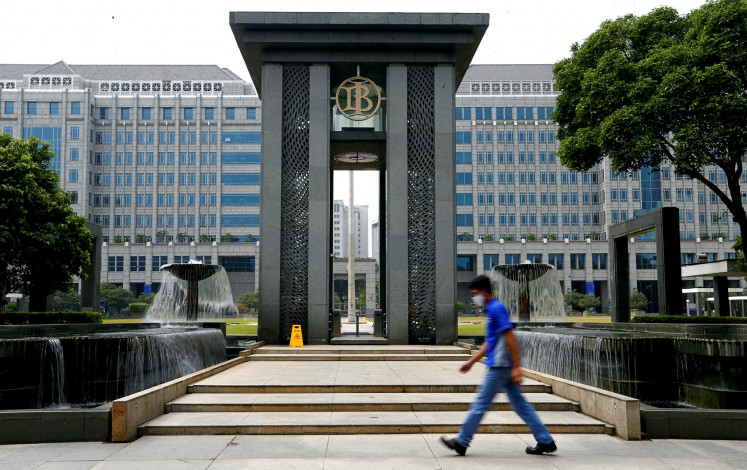Popular Reads
Top Results
Can't find what you're looking for?
View all search resultsPopular Reads
Top Results
Can't find what you're looking for?
View all search resultsWatching wild animals at Batuputih Nature Tourism Park
The wild animals at Batuputih Nature Tourism Park is a major tourist attraction in Bitung regency, North Sulawesi
Change text size
Gift Premium Articles
to Anyone
The wild animals at Batuputih Nature Tourism Park is a major tourist attraction in Bitung regency, North Sulawesi.
Visitors are able to watch and observe a spectrum of animals, mainly tarsiers, the world's smallest primates. There are also Sulawesi crested black macaques, tailless monkeys and bats.
Endangered tropical birds like kingfishers and red-knobbed hornbills, from the toucan family, soar noisily above the jungle.
The Batuputih Nature Tourism Park is part of the vast Tangkoko-Batuangus Nature Reserve with a total area of over 8,700 hectares.
"Wake up, wake up, it's nearly dawn. Let's go, otherwise the tarsiers will go back to their homes," Saroyo Sumarto, a researcher of wild animals in North Sulawesi, shouted to a group of reporters fast asleep.
The nocturnal tarsiers live in groups. One group lives in a large hollow tree in the middle of the forest, which takes about 50 minutes to reach by foot.
The tarsier is tiny, measuring about 8 centimeters in height with huge round eyes and a long tail.
"Stop here. We've reached our destination. Be very quiet," Saroyo said. Everybody found a spot not far from the big tree.
After waiting for several minutes, Saroyo gestured the tarsiers were coming. "That's the sound of the male tarsier. It's female partner will make a sound in response," he said.
A distant sound resembling a bird's was followed by a similar sound from the other direction. "They have started to communicate with each other. Researchers call this a duet call; a kind of call for a family of tarsiers with their babies to return home," Saroyo explained.
One of the guides spotted a tarsier jumping from one tree trunk to another before finally going home into the hollow of the tree.
"There's another one," he shouted as visitors quickly took snaps of the creatures.
Saroyo said the tarsiers belonged to a group of primates that are loyal to their partners. "They always call their partners in the morning to ensure they are home after hunting for insects," he said.
After catching a glimpse of the tarsiers, Saroyo invited the visitors to see the crested black macaque, which is listed as endangered and is fully protected under Indonesian law.
It is estimated that there are only 5,500 of the birds left. The largest population exists at the Tangkoko-Batuangus Nature Reserve where they're protected by forest rangers, researchers and visiting tourists.
Crested black macaques spend more than half their time on the ground, traveling between fruit trees and foraging for insects.
Saroyo reminded the visitors not to get too close to the monkeys as they could spread disease.
In the dark hours of the night, you can see many bats flapping their wings through the reserve. Several of them were captured in large nets to be identified by the Wildlife Conservation Society before being released again to share the sky and trees of the reserve with the monkeys and birds.
-- JP/Hyginus Hardoyo










